|
News Archive: May 1-31 |

|
Discovery passes launch debris review for July liftoff
After a "spirited" two-day review, NASA managers today concluded the agency has reduced the threat of catastrophic damage from external tank foam and other debris to an acceptable level, a major milestone on the road to clearing the Discovery for launch July 1 on the second post-Columbia shuttle mission.
 FULL STORY FULL STORY
 |  |

|
 |

Additional coverage for subscribers:
 VIDEO:
WEDNESDAY SPACE SHUTTLE PROGRAM NEWS UPDATE VIDEO:
WEDNESDAY SPACE SHUTTLE PROGRAM NEWS UPDATE
DIAL-UP: part 1 and part 2
BROADBAND: part 1 and part 2

 MORE: STS-121 VIDEO COVERAGE MORE: STS-121 VIDEO COVERAGE
 SUBSCRIBE NOW SUBSCRIBE NOW

|
Saturn's moon Enceladus may have rolled over
Enceladus, a small icy moon of Saturn, may have dramatically reoriented relative to its axis of rotation, rolling over to put an area of low density at the moon's south pole. According to a new study, this reorientation process could explain the polar location of a region where NASA's Cassini spacecraft recently observed icy jets and plumes indicating active geysers of water vapor spewing from the moon's surface.
 FULL STORY FULL STORY
 |  |

|
 |
Stargazing at Saturn
The brilliant supergiant star, Rigel, emerges from behind the haze of Saturn's upper atmosphere in this Cassini view. Rigel in is one of the 10 brightest stars in Earth's sky and forms the left foot (sometimes referred to as the left knee) of the familiar constellation Orion.
 FULL STORY FULL STORY
 |  |

|
 |
Titan on the side
Saturn's largest moon, Titan, peaks out from under the planet's rings of ice. This view from the Cassini spacecraft looks toward Titan from slightly beneath the ringplane. The dark Encke gap is visible here, as is the narrow F ring.
 FULL STORY FULL STORY
 |  |

|
 |
TIMED satellite mission extended through 2010
Since its launch in 2001, NASA's TIMED spacecraft has been exploring one of Earth's last atmospheric frontiers, collecting valuable data during various phases of the solar cycle. The TIMED community will now have the opportunity to further its studies of Earth's atmosphere when the mission begins an extended campaign.
 FULL STORY FULL STORY
 |  |
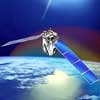
|
 |
Scientists predict how to detect a new dimension
Scientists at Duke and Rutgers universities have developed a mathematical framework they say will enable astronomers to test a new five-dimensional theory of gravity that competes with Einstein's General Theory of Relativity.
 FULL STORY FULL STORY
 |  |

|
 |
Ariane 5 blasts off
An Arianespace Ariane 5 rocket launched Mexican and Thai telecommunications satellites Saturday from the Guiana Space Center on the northeastern shore of South America. Liftoff into cloudy skies before sunset occurred at 2109 GMT (5:09 p.m. EDT) to begin the successful 32-minute flight to orbit.
 MISSION STATUS CENTER MISSION STATUS CENTER
 |  |
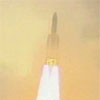
|
 |
Earthquake research satellite launched into orbit
Using a Russian Navy strategic submarine and a converted ballistic missile, a small research satellite was launched into orbit Friday on a mission to aid in the potential development of earthquake forecasts from space.
 FULL STORY FULL STORY
 |  |

|
 |
Satellites save lives from floods, landslides
Using NASA's advanced Earth-observing satellites, scientists have discovered a new opportunity to build early detection systems that might protect thousands from floods and landslides.
 FULL STORY FULL STORY
 |  |
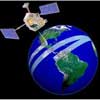
|
 |
Atmospheric study shows effects on Earth and Mars
Despite differences in the chemical compositions and densities of Earth's and Mars' atmospheres, we now have a definitive example showing that both planets' atmospheres react similarly to varying levels of solar energy impacting them during the sun's 25-day rotation.
 FULL STORY FULL STORY
 |  |

|
 |
Minotaur rocket adds two launches to manifest
Two experimental U.S. military satellites will be launched aboard a pair of Orbital Sciences-prepared Minotaur 1 rockets over the next year-and-a-half, the Air Force has announced.
 FULL STORY FULL STORY
 |  |

|
 |
SOHO will lead a fleet of solar observatories
New funding, to extend the mission of the venerable solar watchdog SOHO, will ensure it plays a leading part in the fleet of solar spacecraft scheduled to be launched over the next few years.
 FULL STORY FULL STORY
 |  |

|
 |
APL to build NASA's Radiation Belt Storm Probes
The Johns Hopkins University Applied Physics Laboratory will develop and operate twin NASA spacecraft to study how the sun interacts with Earth's radiation belts. The Radiation Belt Storm Probes mission will be part of NASA's Living With a Star Program.
 FULL STORY FULL STORY
 |  |

|
 |
Weather observatory for Americas ascends to space
The first member of a revitalized series of spaceborne weather watchers was shepherded into orbit by a Delta 4 rocket in a marathon Wednesday evening launch, giving American meteorologists a sophisticated new tool to warn against dangerous severe storms.
 FULL STORY FULL STORY
 MISSION STATUS CENTER MISSION STATUS CENTER
 GOES-N FACT SHEET GOES-N FACT SHEET
 IMAGES: SERVICE TOWER ROLLBACK IMAGES: SERVICE TOWER ROLLBACK
 IMAGES: LAUNCH PHOTO GALLERY IMAGES: LAUNCH PHOTO GALLERY
 IMAGES: AUG. 15 LAUNCH ATTEMPT IMAGES: AUG. 15 LAUNCH ATTEMPT
 IMAGES: AUG. 16 LAUNCH ATTEMPT IMAGES: AUG. 16 LAUNCH ATTEMPT
 |  |

|
 |

Additional coverage for subscribers:
 VIDEO:
DELTA 4 BLASTS OFF WITH GOES-N SHORT | LONGER VIDEO:
DELTA 4 BLASTS OFF WITH GOES-N SHORT | LONGER
 VIDEO:
THE FULL LAUNCH EXPERIENCE PLAY VIDEO:
THE FULL LAUNCH EXPERIENCE PLAY
 VIDEO:
WIDE-SCREEN VIEW FROM NASA CAUSEWAY PLAY VIDEO:
WIDE-SCREEN VIEW FROM NASA CAUSEWAY PLAY

 VIDEO:
PRE-LAUNCH NEWS BRIEFING DIAL-UP | BROADBAND VIDEO:
PRE-LAUNCH NEWS BRIEFING DIAL-UP | BROADBAND
 AUDIO:
LISTEN TO THE NEWS CONFERENCE FOR IPOD AUDIO:
LISTEN TO THE NEWS CONFERENCE FOR IPOD
 VIDEO:
NARRATED ANIMATION OF GOES-N LAUNCH PLAY VIDEO:
NARRATED ANIMATION OF GOES-N LAUNCH PLAY
 VIDEO:
GOES-N HOISTED ATOP DELTA 4 ROCKET PLAY VIDEO:
GOES-N HOISTED ATOP DELTA 4 ROCKET PLAY
 VIDEO:
SPACECRAFT DRIVEN TO LAUNCH PAD 37B PLAY VIDEO:
SPACECRAFT DRIVEN TO LAUNCH PAD 37B PLAY
 VIDEO:
ROCKET NOSE CONE PLACED AROUND GOES-N PLAY VIDEO:
ROCKET NOSE CONE PLACED AROUND GOES-N PLAY
 VIDEO:
GOES-N LIFTED TO ROCKET ADAPTER AT ASTROTECH PLAY VIDEO:
GOES-N LIFTED TO ROCKET ADAPTER AT ASTROTECH PLAY
 VIDEO:
AUGUST 15 LAUNCH ATTEMPT SCRUBBED PLAY VIDEO:
AUGUST 15 LAUNCH ATTEMPT SCRUBBED PLAY
 VIDEO:
AUGUST 16 LAUNCH ATTEMPT SCRUBBED PLAY VIDEO:
AUGUST 16 LAUNCH ATTEMPT SCRUBBED PLAY
 VIDEO:
VIEWS OF DELTA 4 ON THE PAD PLAY VIDEO:
VIEWS OF DELTA 4 ON THE PAD PLAY
 SUBSCRIBE NOW SUBSCRIBE NOW

|
Hubble captures a 'five-star' rated gravitational lens
The Hubble Space Telescope has captured the first-ever picture of a distant quasar lensed into five images. In addition, the image holds a treasure of lensed galaxies and even a supernova.
 FULL STORY FULL STORY
 |  |

|
 |
A new ruler available to measure the universe
A team of astronomers has published the largest three-dimensional map of the universe ever constructed, a wedge-shaped slice of the cosmos that spans a tenth of the northern sky, encompasses 600,000 uniquely luminous red galaxies, and extends 5.6 billion light-years deep into space, equivalent to 40 percent of the way back in time to the Big Bang.
 FULL STORY FULL STORY
 |  |

|
 |
From dark to bright and red to white on Iapetus
Cassini's landmark investigation of Saturn's yin-yang moon Iapetus, with its bright and dark hemispheres, continues to provide insights into the nature of this intriguing body.
 FULL STORY FULL STORY
 |  |

|
 |
Innovative technique used to discover planet
An international team of professional and amateur astronomers, using simple off-the-shelf equipment to trawl the skies for planets outside our solar system, has hauled in its first "catch."
 FULL STORY FULL STORY
 |  |

|
 |
Hale says 'rough cut' wind tunnel data is positive
Shuttle program manager Wayne Hale, on hand for Discovery's rollout to launch pad 39B Friday, said a preliminary look at complex wind tunnel data shows the ship's redesigned external fuel tank should be safe to fly in July. While stressing that a detailed analysis of the data is ongoing and saying new problems could always crop up, "the preliminary loads indications are good, but we have to wait until they get to the bottom line."
 FULL STORY FULL STORY
 |  |

|
 |
Space shuttle Discovery makes trek to launch pad
Discovery has arrived at pad 39B for its planned July 1 liftoff on the second post-Columbia space shuttle test flight. Friday's rollout from the Vehicle Assembly Building took eight hours to complete.
 MISSION STATUS CENTER - live updates! MISSION STATUS CENTER - live updates!
 IMAGES: ROLLOUT BEGINS IMAGES: ROLLOUT BEGINS
 IMAGES: GALLERY PART 2 IMAGES: GALLERY PART 2
 IMAGES: DISCOVERY REACHES PAD IMAGES: DISCOVERY REACHES PAD
 |  |

|
 |

Additional coverage for subscribers:
 VIDEO:
ROLLOUT FROM VEHICLE ASSEMBLY BUILDING PLAY VIDEO:
ROLLOUT FROM VEHICLE ASSEMBLY BUILDING PLAY
 VIDEO:
TIME-LAPSE MOVIE OF ROLLOUT'S BEGINNING PLAY VIDEO:
TIME-LAPSE MOVIE OF ROLLOUT'S BEGINNING PLAY
 VIDEO:
DISCOVERY CRUISES ALONG THE CRAWLERWAY PLAY VIDEO:
DISCOVERY CRUISES ALONG THE CRAWLERWAY PLAY
 VIDEO:
CRAWLER TURNS NORTHWARD FOR PAD 39B PLAY VIDEO:
CRAWLER TURNS NORTHWARD FOR PAD 39B PLAY
 VIDEO:
DISCOVERY ARRIVES ON THE PAD AT SUNSET PLAY VIDEO:
DISCOVERY ARRIVES ON THE PAD AT SUNSET PLAY
 MORE: STS-121 VIDEO COVERAGE MORE: STS-121 VIDEO COVERAGE
 SUBSCRIBE NOW SUBSCRIBE NOW

|
Early weather outlook favorable for Delta 4 launch
Air Force meteorologists are predicting a 70 percent chance of acceptable weather conditions for next Wednesday's Boeing Delta 4 rocket launch from Cape Canaveral. The rocket will haul the GOES-N weather satellite into orbit.
 WEATHER FORECAST WEATHER FORECAST
 |  |

|
 |
Planetary system with three "Neptunes" found
A team of European astronomers has discovered that a nearby star is host to three Neptune-mass planets. The innermost planet is most probably rocky, while the outermost is the first known Neptune-mass planet to reside in the habitable zone. This unique system is likely further enriched by an asteroid belt.
 FULL STORY FULL STORY
 |  |

|
 |
Lunar Reconnaissance Orbiter launch approved
After successful completion of its mission confirmation review this week, NASA's Lunar Reconnaissance Orbiter project has been given the authority to proceed to the implementation phase.
 FULL STORY FULL STORY
 |  |

|
 |
Dwarfs gave way to giants
The first galaxies were small - about 10,000 times less massive than the Milky Way. Billions of years ago, those mini-furnaces forged a multitude of hot, massive stars. In the process, they sowed the seeds for their own destruction by bathing the universe in ultraviolet radiation. Now, astronomers are presenting direct evidence in support of this theory.
 FULL STORY FULL STORY
 |  |

|
 |
Preparing an extreme physics observatory to fly
Scientists and engineers have completed assembly of the primary instrument for the Gamma-ray Large Area Space Telescope, or GLAST, a breakthrough orbiting observatory scheduled to launch from Cape Canaveral in fall 2007.
 FULL STORY FULL STORY
 |  |
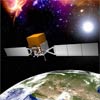
|
 |
OTHER HEADLINES Additional stories today
|
 |
NASA finalizes crews for upcoming shuttle missions -- NASA has finalized crew assignments for two space shuttle missions -- STS-117 and STS-118 -- targeted for launch in 2007 to continue assembly of the International Space Station.
|
 |
Two Deep Impact daughter comet missions proposed
Over the past five years, three space missions -- Deep Impact, Deep Space 1 and Stardust -- have provided unprecedented information about comets. However, rather than clearing up the true nature of comets, the sometimes conflicting data from these missions have scientists questioning almost everything they thought they knew about these fascinating, and potentially dangerous, objects.
 FULL STORY FULL STORY
 |  |

|
 |
Satellite reveals origin of elements in galaxy clusters
Deep observations of two X-ray bright clusters of galaxies with ESA's XMM-Newton satellite allowed a group of international astronomers to measure their chemical composition with an unprecedented accuracy. Knowing the chemical composition of galaxy clusters is of crucial importance to understanding the origin of chemical elements in the Universe.
 FULL STORY FULL STORY
 |  |

|
 |
Researchers look beyond the birth of the Universe
According to Einstein's general theory of relativity, the Big Bang represents The Beginning, the grand event at which not only matter but space-time itself was born. While classical theories offer no clues about existence before that moment, a research team at Penn State has used quantum gravitational calculations to find threads that lead to an earlier time.
 FULL STORY FULL STORY
 |  |

|
 |
X-rays fly as cracking comet streaks across sky
Scientists using NASA's Swift satellite have detected X-rays from a comet that is now passing the Earth and rapidly disintegrating on what could be its final orbit around the sun. The observations provide a rare opportunity to investigate several ongoing mysteries about comets and our solar system.
 FULL STORY FULL STORY
 |  |

|
 |
OTHER HEADLINES Additional stories today
|
 |
Automated rocket safety system passes key test -- NASA has successfully demonstrated a new automated system which may enhance launch safety and reduce costs for access to space. The autonomous flight safety system detects when a rocket is flying
off course and directs itself to end the flight with a "self-destruct" system.
|
 |
Light's most exotic trick: So fast it goes...backwards?
In the past few years, scientists have found ways to make light go both faster and slower than its usual speed limit, but now researchers have gone one step further: pushing light into reverse. As if to defy common sense, the backward-moving pulse of light travels faster than light. Confused? You're not alone.
 FULL STORY FULL STORY
 |  |

|
 |
New theory explains origin of Neptune's oddball moon
Neptune's large moon Triton may have abandoned an earlier partner to arrive in its unusual orbit around Neptune. Triton is unique among all the large moons in the solar system because it orbits Neptune in a direction opposite to the planet's rotation (a "retrograde" orbit). It is unlikely to have formed in this configuration and was probably captured from elsewhere.
 FULL STORY FULL STORY
 |  |

|
 |
The record of Rhea
Cassini looks down upon Saturn's moon Rhea, whose cratered surface was already ancient before any complex life developed on Earth. The terrain seen here has probably changed little in the past billion years.
 FULL STORY FULL STORY
 |  |

|
 |
OTHER HEADLINES Additional stories today
|
 |
ESA selects prime contractor for Gaia astrometry mission -- During a ceremony held in Toulouse, ESA officially awarded EADS Astrium the contract to develop and build the Gaia satellite. The goal of this space mission, currently planned for launch in 2011, is to make the largest, most precise map of our own Galaxy to date.
|
 |
Photo gallery: Shuttle Discovery departs hangar
This collection of photos shows space shuttle Discovery's milestone move on May 12 from its processing hangar to the Vehicle Assembly Building for mating to the external fuel tank and solid rocket boosters.
 ENTER GALLERY ENTER GALLERY
 |  |

|
 |

Additional coverage for subscribers:
 VIDEO:
SHUTTLE DISCOVERY BACKS OUT OF HANGAR PLAY VIDEO:
SHUTTLE DISCOVERY BACKS OUT OF HANGAR PLAY
 VIDEO:
WALK ALONGSIDE THE SHUTTLE DURING THE MOVE PLAY VIDEO:
WALK ALONGSIDE THE SHUTTLE DURING THE MOVE PLAY
 VIDEO:
DISCOVERY PULLS INTO VEHICLE ASSEMBLY BUILDING PLAY VIDEO:
DISCOVERY PULLS INTO VEHICLE ASSEMBLY BUILDING PLAY
 VIDEO:
TIME-LAPSE MOVIE OF DEPARTURE FROM THE HANGAR PLAY VIDEO:
TIME-LAPSE MOVIE OF DEPARTURE FROM THE HANGAR PLAY
 VIDEO:
TIME-LAPSE MOVIE OF ARRIVAL INSIDE THE VAB PLAY VIDEO:
TIME-LAPSE MOVIE OF ARRIVAL INSIDE THE VAB PLAY
 MORE: STS-121 VIDEO COVERAGE MORE: STS-121 VIDEO COVERAGE
 SUBSCRIBE NOW SUBSCRIBE NOW

|
Discovery moves into Vehicle Assembly Building
In a move both symbolic and significant for July's space shuttle launch, Discovery made a quarter-mile transfer from its hangar to the cavernous Vehicle Assembly Building on Friday. The shuttle will be mounted to the external fuel tank and solid rocket boosters inside the VAB in preparation for rollout to launch pad 39B next Friday.
 MISSION STATUS CENTER - live updates! MISSION STATUS CENTER - live updates!
 |  |

|
 |
Fuel tank for Atlantis will get new sensors too
NASA managers Thursday decided to swap out engine cutoff - ECO - sensors inside the liquid hydrogen section of an external fuel tank slated for use with the shuttle Atlantis in late August. Because of lingering questions about subtle failure modes, engineers at the Kennedy Space Center earlier installed a fresh set of hydrogen ECO sensors in the tank that will be used on the next flight in July.
 FULL STORY FULL STORY
 SHUTTLE/ISS CALENDAR SHUTTLE/ISS CALENDAR
 UPDATED FLIGHT PLAN UPDATED FLIGHT PLAN
 TIMELINE WALKTHROUGH TIMELINE WALKTHROUGH
 LAUNCH WINDOWS CHART LAUNCH WINDOWS CHART
 MISSION QUICK-LOOK: Page 1 | Page 2 MISSION QUICK-LOOK: Page 1 | Page 2
 |  |

|
 |

Additional coverage for subscribers:
 VIDEO:
EXTERNAL TANK OPENED FOR SENSOR REPLACEMENT PLAY VIDEO:
EXTERNAL TANK OPENED FOR SENSOR REPLACEMENT PLAY
 VIDEO:
EXTERNAL TANK HOISTED OUT OF CHECKOUT BAY PLAY VIDEO:
EXTERNAL TANK HOISTED OUT OF CHECKOUT BAY PLAY
 VIDEO:
FOAM REAPPLIED TO EXTERNAL TANK ACCESS PORT PLAY VIDEO:
FOAM REAPPLIED TO EXTERNAL TANK ACCESS PORT PLAY
 VIDEO:
EXTERNAL TANK MATED TO SOLID ROCKET BOOSTERS PLAY VIDEO:
EXTERNAL TANK MATED TO SOLID ROCKET BOOSTERS PLAY
 VIDEO:
PAYLOAD BAY DOORS CLOSED FOR HANGAR DEPARTURE PLAY VIDEO:
PAYLOAD BAY DOORS CLOSED FOR HANGAR DEPARTURE PLAY
 MORE: STS-121 VIDEO COVERAGE MORE: STS-121 VIDEO COVERAGE
 SUBSCRIBE NOW SUBSCRIBE NOW

|
Hubble: We're safe from some gamma-ray bursts
Homeowners may have to worry about floods, hurricanes, and tornadoes destroying their homes, but at least they can remove long-duration gamma-ray bursts (GRBs) from their list of potential natural disasters, according to recent findings by NASA's Hubble Space Telescope.
 FULL STORY FULL STORY
 |  |

|
 |
Spitzer telescope sees trail of comet crumbs
NASA's Spitzer Space Telescope has snapped a picture of the bits and pieces making up Comet 73P/Schwassman-Wachmann 3, which is continuing to break apart on its periodic journey around the sun. The new infrared view shows several chunks of the comet riding along its own dusty trail of crumbs.
 FULL STORY FULL STORY
 |  |

|
 |
"Field of Streams" found in Milky Way
A new map of stars in the Milky Way Galaxy, constructed with data from the Sloan Digital Sky Survey, reveals a night sky criss-crossed with streams of stars, left behind by satellite galaxies and star clusters spiraling to their deaths.
 FULL STORY FULL STORY
 |  |

|
 |
Two very dim dwarf galaxies discovered
The Sloan Digital Sky Survey has announced discoveries of two new, very faint companion galaxies to the Milky Way. The first was found in the direction of the constellation Canes Venatici
(the Hunting Dogs); the second in the constellation Bootes (the Herdsman).
 FULL STORY FULL STORY
 |  |

|
 |
OTHER HEADLINES Additional stories today
|
 |
AeroAstro completes STPSat-1 integration -- AeroAstro, Inc., a leading provider of small satellites and related technology products, today announced the completion of bus integration on the STPSat-1 satellite, a low-earth-orbiting satellite that will be launched this year.
|
 |
Venus Express spacecraft has reached final orbit
The European Space Agency's Venus Express spacecraft has reached its final operational orbit, less than one month after insertion into orbit and after sixteen loops around the planet.
 FULL STORY FULL STORY
 |  |

|
 |
Physics in Universe's youth
Using a quasar located 12.3 billion light-years away as a beacon, a team of astronomers detected the presence of molecular hydrogen in the farthest system ever, an otherwise invisible galaxy that we observe when the Universe was less than 1.5 billion years old, that is, about 10% of its present age.
 FULL STORY FULL STORY
 |  |

|
 |
Meteorites discovered to carry interstellar carbon
Like an interplanetary spaceship carrying passengers, meteorites have long been suspected of ferrying relatively young ingredients of life to our planet. Using new techniques, scientists have discovered that meteorites can carry other, much older passengers as well‹primitive, organic particles that originated billions of years ago either in interstellar space, or in the outer reaches of the solar system as it was beginning to coalesce from gas and dust.
 FULL STORY FULL STORY
 |  |

|
 |
Landing on Titan: Huygens probe stars in new movies
A little more than one year after the spectacular descent of the European Space Agency's Huygens
on Saturn's giant moon Titan, scientists have released two new movies of the descent. These represent the best visual product from the mission obtained so far and most realistic way yet to experience the landing on a far-away world.
 FULL STORY FULL STORY
 |  |

|
 |
Sky survey accomplished in satellite's spare time
For the past four years, while ESA's XMM-Newton X-ray observatory has been slewing between different targets ready for the next observation, it has kept its cameras open and used this spare time to quietly look at the heavens. The result is a "free-of-charge" mission spin-off" - a survey that has now covered an impressive 25 percent of the sky.
 FULL STORY FULL STORY
 |  |

|
 |
OTHER HEADLINES Additional stories today
|
 |
Doi named to shuttle crew -- Japanese astronaut Takao Doi has been named to the space shuttle crew that will deliver the first module of the Japanese laboratory, Kibo, to the International Space Station.

Intelsat confirms IA-9 launch -- Intelsat has decided to launch its Intelsat Americas-9 (IA-9) satellite in the fourth quarter of 2007. The decision will allow Intelsat to serve customer demand for high-powered Ku-band capacity for data networking, video and other applications.

Historic NASA tunnel used to test blended wing body -- A historic NASA wind tunnel is helping test the prototype of a new, more fuel-efficient aircraft design. Boeing Phantom Works has partnered with NASA and the Air Force Research Laboratory to explore the advantages of a concept called the blended-wing body, which looks different than most airplanes with its modified triangular-shaped wing.
|
 |
The chameleon supernova
Using the Gemini South telescope in Chile, Australian astronomers have found a predicted "companion" star left behind when its partner exploded as a very unusual supernova. The presence of the companion explains why the supernova, which started off looking like one kind of exploding star, seemed to change its identity after a few weeks.
 FULL STORY FULL STORY
 |  |

|
 |
"Seas" of Titan are sand
Until a couple of years ago, scientists thought the dark equatorial regions of Titan might be liquid oceans. New radar evidence shows they are seas -- but seas of sand dunes like those in the Arabian or Namibian Deserts.
 FULL STORY FULL STORY
 |  |
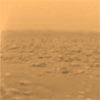
|
 |
Shuttle managers decide against special fueling test
NASA managers Thursday ruled out a June 1 fueling test with the shuttle Discovery, deciding there was no clear-cut technical justification for a complex exercise that would put unwanted stress on the tank's foam insulation and use up valuable contingency time.
 FULL STORY FULL STORY
 |  |

|
 |
Hubble snaps baby pictures of Jupiter's "Red Spot Jr."
NASA's Hubble Space Telescope is giving astronomers their most detailed view yet of a second red spot emerging on Jupiter. For the first time in history, astronomers have witnessed the birth of a new red spot on the giant planet, which is located half a billion miles away.
 FULL STORY FULL STORY
 |  |

|
 |
How long is a day on the gas giant Saturn?
Measuring the rotation period of a rocky planet like the Earth is easy, but similar measurements for planets made of gas, such as Saturn, pose problems. Researchers present new results in this week's Nature that may solve the mystery.
 FULL STORY FULL STORY
 |  |
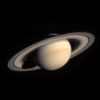
|
 |
Russian Soyuz rocket launches new spy satellite
A clandestine military payload was placed into orbit by Russian military forces Wednesday in a launch from the nation's northern space base. The craft is likely a new spy satellite that will serve the Russian defense ministry.
 FULL STORY FULL STORY
 |  |
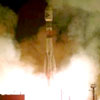
|
 |
STEREO spacecraft begin Florida launch preparations
NASA's nearly identical twin STEREO spacecraft, designed and built by the Johns Hopkins University Applied Physics Laboratory, arrived Wednesday in Florida for final pre-launch testing and preparations. Once in orbit, the observatories will capture the first-ever 3-D "stereo" views of the sun and solar wind.
 FULL STORY FULL STORY
 |  |

|
 |
First view of monstrous stars being born
Scientists have secured their first look at the birth of monstrous stars that shine 100,000 times more brightly than the Sun, thanks to the European Space Agency's Infrared Space Observatory.
 FULL STORY FULL STORY
 |  |

|
 |
14th International Space Station crew announced
NASA astronauts Michael Lopez-Alegria and Sunita Williams and Russian cosmonaut Mikhail Tyurin have been named as the 14th crew of the International Space Station. Expedition 14 is scheduled to begin this fall.
 FULL STORY FULL STORY
 |  |
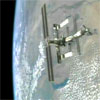
|
 |
Closest-spaced giant black hole pair found
Astronomers using the National Science Foundation's Very Long Baseline Array (VLBA) radio telescope have found the closest pair of supermassive black holes ever discovered in the Universe -- a duo of monsters that together are more than 150 million times more massive than the Sun and closer together than the Earth and the bright star Vega.
 FULL STORY FULL STORY
 |  |

|
 |
Eileen Collins completes career of space firsts
Astronaut Eileen Collins is leaving NASA. Collins was the first woman to command a space shuttle and the leader of Discovery's Return to Flight mission last year. She plans to pursue private interests and spend more time with family.
 FULL STORY FULL STORY
 |  |

|
 |
New Horizons in space: The first 100 days
This past weekend marked another milestone in New Horizons' historic journey to Pluto - the spacecraft's 100th day in space. Since launch from Cape Canaveral Air Force Station on Jan. 19, it has been a busy flight.
 FULL STORY FULL STORY
 |  |

|
 |
OTHER HEADLINES Additional stories today
|
 |
KSC director announces retirement -- James W. Kennedy, the eighth director in the history of NASA's Kennedy Space Center, has announced his intention to retire in January 2007 after 35 years of government service. Kennedy spent 31 of those years with NASA and four with the U.S. Air Force. Kennedy's successor will be announced at a later date.
|
 |
|
Read our earlier news archive page.
|



